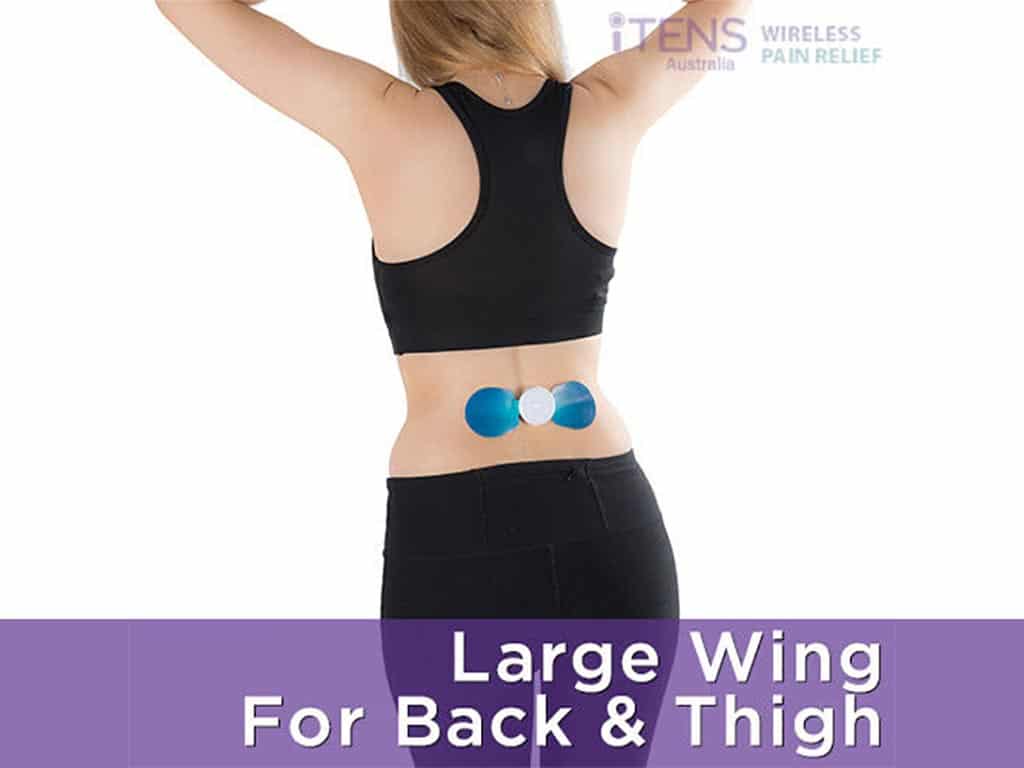
Transcutaneous Electrical Nerve Stimulation (TENS) is a natural pain relief alternative. TENS for lower back pain provides many benefits. It uses low-voltage electrical currents to block the perception of pain and release natural painkillers. Hence, it provides temporary relief without the need for drugs. To use, place the adhesive electrode pads on the pain area and adjust the strength and patterns of electrical pulses depending on the level of pain.
Lower back pain is a common affliction that affects millions of people worldwide. It can be caused by various factors, such as muscle strain, poor posture, acute injury, or underlying medical conditions. Without effective pain relief, it can reduce the normal activity levels of individuals. One of the best ways to alleviate backaches is to use a TENS machine. This article will present how TENS works, how to use the device, and the safety guidelines to follow.
How Does a TENS for the Lower Back Work?
TENS for the lower back is a portable device consisting of a controller and adhesive electrode pads. It works by flooding the sensory nerves with mild electrical currents to relieve pain. This approach stimulates the nerve fibres to close the gating channels in the spinal cord and release endorphins. Moreover, the device is adjustable to suit different needs.
High-frequency stimulation (50-120 Hz) is known to interrupt the transmission of pain signals to the brain. This frequency level closes the nerve pathways in the spinal cord, which are known as pain gate controllers. On the other hand, low-frequency stimulation (2-10 Hz) triggers endorphin production. The hormones provide analgesic effects and help reduce stress and anxiety.
TENS also have other benefits, such as boosting blood circulation and reducing inflammation. It promotes the healing of damaged nerves, tissues, and muscles. Consequently, it restores the range of motion that may be limited due to an injury or medical operation. Likewise, it helps the body to relax, which can lead to improved sleep.
Related Conditions It Can Treat
- Musculoskeletal pain: conditions that affect the bones, ligaments, joints, tendons, and muscles in the back. Some common ailments are muscle overuse, fibromyalgia and pulled muscles.
- Neuropathic pain: nerve disorders that send abnormal pain messages to the brain. Conditions like sciatica and diabetic neuropathy contribute to back pain.
- Joint pain: inflammations caused by wear and tear of the cartilage. It can lead to lower back pain due to osteoarthritis, rheumatoid arthritis, or ankylosing spondylitis.
- Spinal cord injury: damage to any structure of the spinal column due to fractures or other causes.
- Muscle spasms: tightness in the back muscles.

How to Use a TENS for the Lower Back
Administrating TENS for lower back pain is easy. Individuals can operate the device in the comfort of their homes, minimising the need for regular therapy sessions. It also requires a few preparations, such as cleaning the treatment area with warm water and mild soap. After washing, ensure the skin is clean and dry before putting the electrodes.
To begin TENS treatment, place the electrode pads on the pain area and turn on the unit. Next, users should adjust the pulse rates and pulse duration depending on their type of pain. Also, begin with the lowest intensity level and gradually increase them to a comfortable level. The stimulation should be strong but not overpowering.
Many devices feature pre-set modes for quick and convenient treatment. These are programs with predefined parameters based on specific pain conditions. It also includes muscle stimulation modes for relieving muscle tension and soreness. Individuals can select a desired therapy from the menu. After the session, turn off the device and remove the pads carefully.
Proper Pad Placement
In general, the recommended pad placement is to position two sets of electrodes on either side of the pain area. This is to direct the flow of electrical impulses towards the centre. For lower back pain that extends to the entire area, place the electrodes on both sides of the spine.
Distribute the TENS pads evenly one to two inches apart from each other. Additionally, the pads should never overlap. Another important point to remember is to avoid sensitive areas. This includes direct placement on the spine, joints, varicose veins, broken skin, and areas with skin irritation.

Safety Guidelines When Using a TENS for the Lower Back
It is essential to adhere to the safety guidelines when using TENS for the lower back. Always follow the specific instructions of the manufacturer or recommendations of a healthcare provider. In addition, keep the intensity levels within a tolerable range. While using the device, it should not cause intense muscle contractions. If it causes discomfort, check the settings and readjust accordingly.
Furthermore, keep the treatment duration less than one hour. The prolonged placement may cause skin burns or further nerve damage. For longer use, allot a 20-minute break between sessions to allow the skin to rest. Similarly, avoid using TENS while sleeping and driving. Since TENS is an electrical device, it should not be used near water sources.
Other pad placements to avoid are the chest area, head, and throat. These regions house vital organs and nerves and may trigger uncomfortable sensations. It is also advisable to consult a health professional before starting electrotherapy. This is particularly crucial for individuals with heart problems, epilepsy, pacemakers, and pregnant women. The use of TENS may be contraindicated for these conditions.
When to See a Doctor
It is important to note that TENS provides symptomatic relief but does not cure the source of pain. For severe back pain, it is advisable to consult a medical professional for diagnosis. Persistent pain could be a symptom of an underlying health condition that needs medical intervention.
Another reason to see a doctor is if the pain does not improve with conservative treatments like medications, heat and cold therapy, or TENS. Moreover, seek immediate attention if back pain comes with weakness in the legs, sudden weight loss or gain, and loss of bladder or bowel control.
Conclusion
TENS for the lower back is an effective way to manage various pain conditions. It utilises a portable device that sends mild electrical impulses through the electrodes. The machine works by stimulating the nerves to block pain signals and trigger the release of endorphins. Thus, it provides short-term relief without the aid of drugs. The common conditions that TENS can help treat are arthritis pain, muscle pain, and neuropathic pain.
The device has adjustable settings to allow personalisation of pain management. Individuals can control the delivery of pulse rates, pulse duration, and intensity based on their tolerance or comfort level. However, it is vital to use the device properly for safe and effective use. Users should follow the safety guidelines to prevent any potential risks. Finally, it is advisable to consult a doctor to know if TENS is a suitable treatment or if pain worsens despite care.







